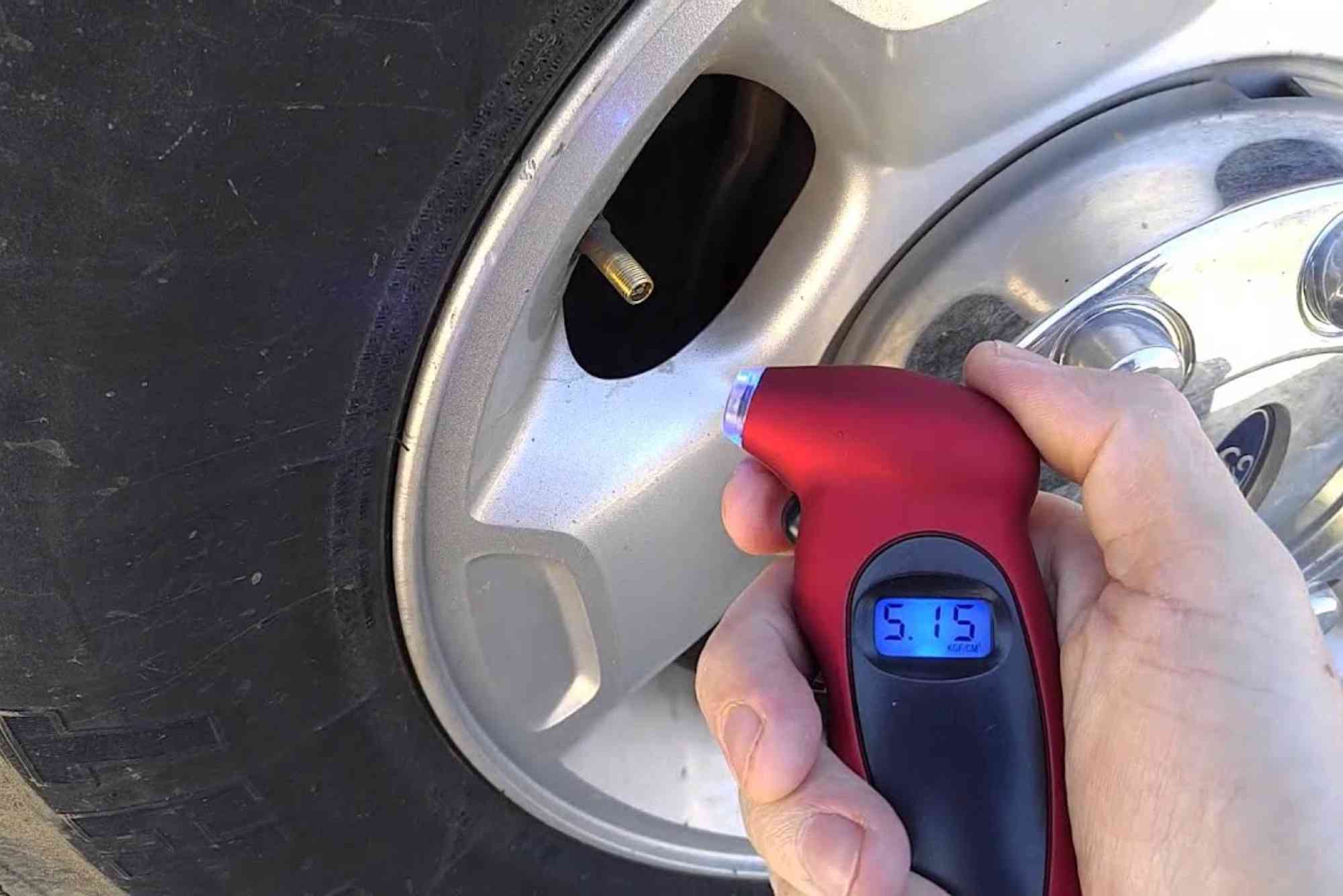Introduction
If you have ever pulled into a gas station to check your tire pressure, you probably used the built-in gauge attached to the air pump. It seems quick and convenient, but many drivers wonder: how accurate is a gas station tire pressure gauge? After all, tire pressure directly affects safety, fuel efficiency, and even tire lifespan. If the reading is wrong, it could lead to underinflation or overinflation—both of which cause problems on the road.
This article explores the accuracy of gas station tire pressure gauges, the reasons behind discrepancies, and practical tips for ensuring you always drive with the correct tire pressure. By the end, you will know whether you can rely on those public gauges or if it is time to invest in your own.
Why Tire Pressure Accuracy Matters
Tire pressure might seem like a small detail, but it plays a huge role in vehicle performance. Properly inflated tires improve fuel economy, enhance handling, and reduce the risk of blowouts. Underinflated tires create extra rolling resistance, which burns more fuel, while overinflated tires reduce grip and wear unevenly. A difference of just a few pounds per square inch (PSI) can change how your vehicle behaves.
Because of this, accurate tire pressure readings are essential. If a gas station tire pressure gauge shows the wrong number, you could be driving in unsafe conditions without realizing it.
How Gas Station Tire Pressure Gauges Work
Most gas stations use a simple built-in gauge attached to their air compressor. When you connect the nozzle to your tire valve, the device reads the air pressure and displays it on either an analog dial or a digital screen. In theory, this should give you an instant snapshot of your tire’s PSI.
However, unlike personal tire gauges you buy for home use, gas station gauges are exposed to constant use, dirt, moisture, and even vandalism. Over time, this exposure can affect accuracy.
Are Gas Station Tire Pressure Gauges Accurate?
In short, not always. Many drivers and automotive experts report that gas station tire pressure gauges often provide readings that are off by several PSI. That may not sound like much, but it can make a big difference.
Imagine your tire is supposed to be 35 PSI. If the gas station gauge shows 32 PSI when the actual pressure is 35, you might add unnecessary air and end up overinflating. The opposite problem happens if the gauge reads high and you end up underinflated. Both situations create risks for performance and safety.
Why Gas Station Tire Pressure Gauges May Be Inaccurate
There are several reasons why gas station gauges fail to deliver precise readings.
Exposure and Wear
Since these gauges are used by hundreds of drivers weekly, they endure significant wear and tear. The hoses crack, the nozzles loosen, and the internal sensors degrade. This constant use without proper upkeep lowers accuracy.
Lack of Calibration
Personal tire gauges can be calibrated or replaced easily, but gas station equipment is rarely maintained. Calibration drift means the displayed PSI may not match the real value. Unless the station actively services its gauges, readings may be unreliable.
Environmental Conditions
Outdoor stations expose equipment to rain, extreme heat, freezing temperatures, and dust. Moisture buildup inside the gauge can skew results. Temperature fluctuations also affect air density, further impacting readings.
Human Handling
Rough handling contributes to inaccuracies. Drivers often drop, tug, or twist the nozzles without care. Over time, this damage leads to leaks and faulty seals that compromise the gauge.
The Best Way to Check Tire Pressure
While gas station tire pressure gauge may work in a pinch, the most reliable approach is to use your own. A personal digital or analog tire gauge, kept in your glove box or trunk, ensures consistent and trustworthy readings.
For the most accurate results, always measure tire pressure when your tires are cold, ideally before driving more than a mile. Tire pressure rises as you drive because heat builds up in the rubber. Checking early in the morning gives the truest measurement.
What to Do If You Only Have a Gas Station Gauge
Not everyone carries a personal gauge, so what happens if the gas station tool is your only option? There are still ways to make the most of it. Start by knowing your recommended PSI, usually found inside the driver’s door frame or in the owner’s manual. Add air slowly, and double-check the reading more than once to confirm consistency. If the gauge seems unreliable, err slightly on the lower side and check with a personal gauge later.
Common Misconceptions About Tire Pressure
Many drivers believe that as long as the tire looks full, it is fine. Unfortunately, appearances can be deceiving. A tire can be underinflated by several PSI without showing visible signs. Relying on visual checks is a common mistake.
Another misconception is that the number on the tire sidewall represents the correct inflation pressure. That figure is actually the maximum pressure the tire can handle, not the recommended setting for daily driving. Always follow the vehicle manufacturer’s specification.
The Cost of Driving on Incorrect Tire Pressure
Driving with the wrong tire pressure has both financial and safety consequences. Underinflated tires wear out faster on the edges, forcing you to replace them sooner. Overinflated tires wear unevenly in the center, reducing traction. Both conditions shorten tire lifespan and compromise handling.
Fuel economy also suffers. Studies show that underinflated tires can reduce mileage by up to three percent. While that may seem small, it adds up over time. More importantly, the risk of tire blowouts increases when pressure is off, especially during long trips or high-speed driving.
Should You Trust a Gas Station Tire Pressure Gauge?
The honest answer is no, at least not completely. While some stations may maintain their equipment, many do not. Gas station tire pressure gauges are fine for quick top-offs, but they should not be your sole method of measurement. Think of them as a backup tool rather than a primary source of truth.
Expert Recommendations
Automotive experts consistently recommend owning a portable tire pressure gauge. Digital models are highly accurate, easy to use, and affordable. For added convenience, some models even attach directly to portable air compressors, letting you inflate and measure at home.
Keeping your own gauge ensures consistency. Even if it is not perfect, using the same tool each time gives you a reliable baseline. This matters more than chasing an exact laboratory reading.
Frequently Asked Questions
How accurate are gas station tire pressure gauges?
Most gas station gauges can be off by two to five PSI due to wear, lack of calibration, and environmental exposure.
Can I rely on gas station gauges for long trips?
They work in emergencies, but you should double-check with a personal gauge before starting a long drive.
Why does my tire pressure change during the day?
Temperature fluctuations cause air to expand or contract. That is why pressure is lower on cold mornings and higher in the afternoon.
Should I buy my own tire pressure gauge?
Yes. Owning one provides consistent, accurate readings and removes the uncertainty of relying on public equipment.
Gas station tire pressure gauges may be convenient, but they are not always reliable. Inaccurate readings can leave you with underinflated or overinflated tires, both of which reduce safety and performance. The best way to ensure proper tire care is to carry your own gauge and check pressure regularly when tires are cold.




